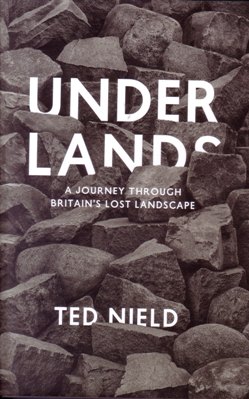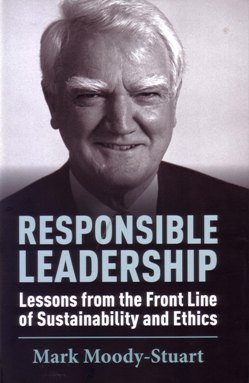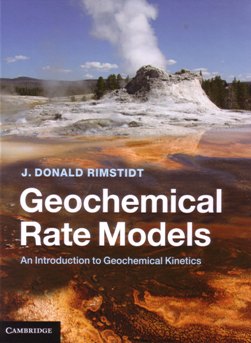Underlands: a journey through Britain's lost landscape

As a geologist and science writer I've always felt that the best way to engage non-specialists in your specialist subject is to start with the familiar before moving into the obscure. And to my mind, references to everyday objects and, especially, the history behind them, often provides a very good jumping off point. In Underlands, Ted Nield, draws on his own personal and family history to introduce what might be considered the more 'industrial' side of geology. It's a book that will appeal to a wide range of readers, whether or not they have a background in geoscience.
In chapters focusing on quarries, mining and gravestones, Nield deftly combines geological information, with history, politics, philosophy and personal memoir to highlight the important role geology plays in so many practical aspects of our lives. In these times when many would argue that new-style ‘Earth Sciences’ departments relegate geology to a minor role – if not ignore it altogether – the book also serves as a wake-up call, reminding us of what we stand to lose if students are not introduced to geological fieldwork and exposed to 'real rocks'.
For those of us who, like Nield, studied geology at UK universities in the late 1970s and early 1980s, then honed our skills working in the oil industry during the heady days of the North Sea boom, this book is also a wonderful trip down memory lane. How I remember the culture-shock I felt when I left university life behind and entered the corporate world as an exploration geologist working in the North Sea. And oh, the ordeal of those company Christmas parties and business lunches! Nield's colourful description of his own experiences took me right back. But while my memories of corporate life make me cringe, Nield has put his to better use – as a clever way of introducing the story of the Rubislaw granite quarry near Aberdeen.
As in his earlier books Supercontinent and Incoming!, Nield incorporates a wide range of historical and literary references into his fluent prose, and relies on anecdotes - some very moving and others very amusing - to tell his stories. But with this book Nield goes a step further and also reveals more of his own personality and family history. It all makes for a great read. Were they still alive, his parents would have been very proud.
Reviewed by Nina Morgan
UNDERLANDS – A JOURNEY THROUGH BRITAIN’S LOST LANDSCAPE by TED NIELD Published by: Granta Books, May 2014 288pp hbk ISBN: 9781847086716£20.00. You can buy this book at the Geological Society Bookshop. W: www.geolsoc.org.uk/bookshop
Responsible Leadership

Mark Moody-Stuart has had a distinguished career in the extractive industries culminating in being chairman of Shell, and non-executive chairman of Anglo-American. He was President of the Geological Society from 2004-06. He spent much of his career overseas with Shell and he is admirably placed to offer insights from the front line of sustainability and ethics seen through the workings of large multi-national companies concerned with extraction of natural resources.
This book is part memoir, part reflection on the lessons learned from the issues and dilemmas faced on that journey. It is an engaging, insightful and even sympathetic book that outlines the pressures and challenges on companies working in different parts of the world in an industry that is often critical to the local economy, and which can be regarded as exploitative. It engages with relations with Government and the work done in setting up the UN Global Compact; it champions coalitions involving business, government and civil society, and makes the case that we should continue to interact with countries with poor records on human rights. Mary Robinson comments: ‘This is an insightful book from a business leader who is willing to discuss openly the dilemmas and shortcomings of business in the area of human rights’.
Mark Moody-Stuart is a strong believer in the power of the markets, but he emphasizes the need for regulation, and that corruption is the biggest market failure of all. Companies can make significant contributions in very poor countries, both by offering employment and by building the capacity of local entrepreneurs as dealers and stockists. He analyses the lessons learned from China on poverty eradication, and Shell’s annus horribilis in 1995. This included the public reaction to the decision to dispose of the Brent Spar in the deep Atlantic, and the execution of Ken Saro-Wiwa, who had been involved in protests against Shell, by the government of Nigeria. He discusses the role of individuals in determining the behaviour of a company, of structure and governance, and of incentivisation. The book closes with a chapter on NGOs and a summary of Mark Moody-Stuart’s life and career.
I greatly enjoyed this wide-ranging book. It prompted me to reappraise a range of issues linked to the extraction of natural resources. It will surely be widely read by people in business, but perhaps it deserves even more to be read by those outside business who are concerned and alarmed by the role of multinational companies, human rights and the protection of the environment. This is a view from the inside, one we don’t hear often, and there is much to recommend it.
Reviewed by Chris Hawkesworth
RESPONSIBLE LEADERSHIP - LESSONS FROM THE FRONT LINE OF SUSTAINABILITY AND ETHICS, by MARK MOODY-STUART. Published by: Greenleaf Publishing Ltd 2014, 349pp ISBN-13: 978-1-906093-96-9 List Price: £25.00 W:
www.greenleaf-publishing.com
Conjugate Divergent Margins

The story behind conjugate margins is of great interest and importance to both industry and academia. Several of the biggest petroleum discoveries of the last decade have been found in the South Atlantic conjugate margins, leading to increased research and exploration in these areas.
This Special Publication from the Geological Society comprises 25 papers, split into three sections: South Atlantic, North Atlantic, and Continental Break-Up Processes. Of these, the South Atlantic chapter is easily the longest, making the North Atlantic chapter feel short in comparison. A good deal of time is spent looking at the margins of Brazil, while less time is spent on African counterparts. The Nova Scotia and Moroccan margins also receive a good deal of attention. The final section deals with continental break-up processes. A lot of time is spent, by a number of different authors, dissecting non-volcanic rifted margins, but conspicuously less on their volcanic counterparts.
The integration of gravity, magnetic and seismic data is a common theme among many papers. There are several very good examples, and some beautiful maps and sections. Much of the seismic is recent and high quality, showing a high level of detail. The petroleum systems are reviewed thoroughly, including discussions on both individual fields and play concepts. The papers themselves are largely very good, while high quality printing makes the most of detailed and colourful images.
Overall this is another good volume from the GSL, but it cannot hope to be comprehensive due to the sheer size of the topic. It does present an interesting and absorbing story of the evolution of particularly the South Atlantic margins, but could have been better balanced, with more time spent on North Atlantic margins, and also more discussion of the evolution of volcanic rifted margins.
Reviewed by Murray Hoggett
CONJUGATE DIVERGENT MARGINS by W U MOHRIAK et al. (Eds). Published by: The Geological Society 2013. ISBN: 978-1-86239-349-3. List price: £120; Geological Society: £60; Other qualifying societies: £72. 568pp. W:
www.geolsoc.org.uk/bookshop.
Geochemical Rate Models

This volume examines how kinetic (rate) models are used to predict rates of geochemical processes encountered in near-surface geological environments. Combining both roles as a reference work and standard textbook, the volume provides a comprehensive and systematic description of rate models and how they are derived from the first principles of kinetic theory.
Presented in 10 main chapters, the author’s approach is to focus on the fundamental and (relatively) simple rate models that underpin and inform the coding utilised in computer-modelling rate processes (an extensive reference list is included to direct the reader to other current literature dealing with the associated computer-modelling derivations if required).
The major topics covered include rate equations, reactor theory, transition state theory, surface reactivity, advective and diffusive transport, aggregation kinetics, nucleation kinetics and solid-solid transformation rates. The detailed mathematical derivation and theoretical basis for each model is presented and illustrated with appropriate worked examples from applications to real-world geochemical problems. Additionally, the volume is supported by online resources, including self-study problems (with solutions) and data spreadsheets used in the text examples, allowing the reader to manipulate the data themselves and gain further appreciation and understanding of the models under consideration.
In general, all sections are well written and edited, concisely laid out with clear and appropriate figures and data-tables - as one has come to expect from Cambridge University Press publications.
Providing a valuable and concise overview of the subject, the primary readership is anticipated to be advanced undergraduate and graduate geoscience students, but will additionally appeal to established researchers and practising geochemists as a reference source for scientific and technical problem-solving.
The author’s 30 years of geochemical research and teaching experience is evident in the volume and I would definitely have benefited from having this book during my final-year undergraduate geochemistry courses! A recommended read.
Reviewed by Mark Griffin
GEOCHEMICAL RATE MODELS - AN INTRODUCTION TO GEOCHEMICAL KINETICS by J Donald Rimstidt. Cambridge University Press. 2014. ISBN 978-1-107-02997-2. hbk 232pp. List Price: £45.00 W:
www.cambridge.org